Algeria, a mesmerizing destination in North Africa, beckons explorers with its breathtaking landscapes, historic ruins, and diverse cultural heritage. Algeria is a true gem for those who appreciate nature and history, offering a wealth of experiences from the breathtaking Atlas Mountains to the expansive Sahara Desert. Today, we’re taking you on a journey to explore the hidden gems of Algeria. Join us as we delve into the country’s rich history, experience its lively present, and discover why it’s a top destination for adventurous travelers seeking genuine encounters. Get ready to uncover Algeria’s secrets and be inspired to plan your own authentic adventure.
Land Area: 2,381,741 km2
Official Language: Arabic, Tamazight (Standard Algerian Berber)
Currency: Algerian Dinar
Population: 46,161,715 (2023)
Capital: Algiers
Table of Contents
Facts about Algeria’s History and Geography
History of Algeria
- The Berbers were the first inhabitants of the Algerian peninsula.
- The first Phoenician merchants came and set up shop in the area about 800 BCE.
- In 146 BCE, the Romans conquered the area, and it eventually became part of the Roman Empire. When the Roman Empire fell, many Berber kingdoms took their place.
- In the seventh century CE, Islam, and Arab culture were brought to Algeria by Arab Muslims. The Fatimids, Almoravids, and Almohads were only some of the Islamic dynasties that dominate Algeria.
- In the 16th century, the Ottoman Empire conquered Algeria and made Algiers the capital of the Algiers Regency.
- In 1830, when France first started colonizing the Americas, French language and culture were imposed. Algeria’s fight for independence from French control lasted several years. Between the years of 1954 and 1962, Algeria fought for its independence.
- Algeria became an independent country on July 5, 1962. Algeria has been an independent nation for over 60 years, during which time it has struggled politically and economically while also striving to develop and preserve its cultural history.
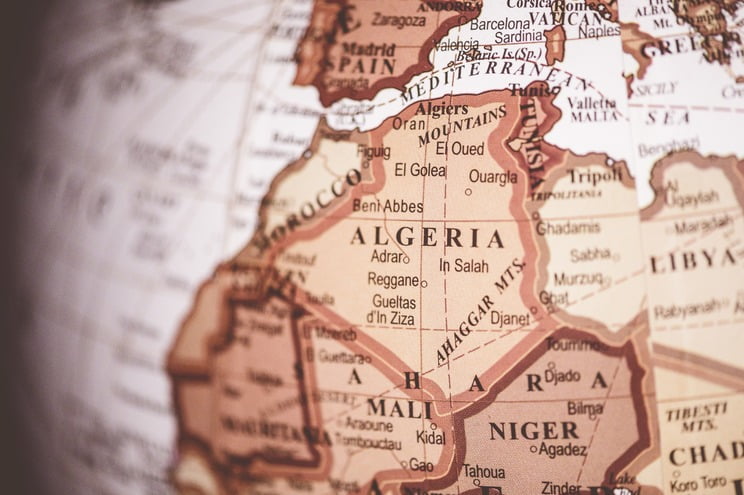
Geographical Facts
- Algeria is located in North Africa. It occupies the No. 1 spot on the African continent and ranks 10th on the global list of the largest countries. The Mediterranean Sea forms the northern boundary of the nation.
- Its boundaries include the nations of Morocco, the disputed area of Western Sahara, and the countries of Tunisia, Libya, Niger, Mali, Mauritania, and Western Sahara.
- A narrow coastal plain covers the length of northern Algeria along the Mediterranean Sea.
- The Atlas Mountains, which traverse the nation from north to south, dominate the scenery as one moves southward. The Atlas Mountains span from the northern Tell Atlas to the southern Saharan Atlas.
- Much of southern Algeria is occupied by the Sahara Desert. Massive tracts of sand dunes, rocky plateaus, and dry vistas are typical of the desert.
- Stunning mountain beauty may be found in the southern section of the nation in the Ahaggar Mountains, often known as the Hoggar.
- The coast has hot summers and moderate winters, whereas the interior and southern parts of the nation have hot summers and cold winters.
- About 1,600 kilometers (1,000 miles) of Algeria’s coastline is comprised of stunning beaches and coastal sceneries.
The Top 10 most interesting facts about Albania are listed below.
01. Trekking in the Sahara and Camels Safaris

In Algeria, a trip across the Sahara or a camel safari is an experience you won’t soon forget. The vastness of the desert, the quiet of the dunes, and the chance to sleep beneath the stars all combine to make for a memorable experience. Camelback tours in the desert with knowledgeable guides let visitors see remote oasis towns, meet local nomads, and pick up useful tips for surviving in the desert. The seclusion and magnificent beauty of the Sahara may be fully appreciated during a hiking adventure.
02. UNESCO Heritage Sites in Algeria
There are seven sites in Algeria that have been designated as World Heritage Sites by UNESCO because of their historical or architectural significance. Among the most famous landmarks are:

Timgad, the African Pompeii
Timgad, the “Pompeii of Africa,” is a Roman city that has been preserved throughout time. Timgad, a prosperous metropolis with remarkable features including a theatre, temples, and a triumphal arch, was founded in 100 AD by Emperor Trajan. Visitors may now explore the city’s well-preserved streets, marvel at the ruins’ majesty, and conjure up images of the city in its heyday. Timgad is an incredible archaeological site in Algeria that provides a rare glimpse into the Roman civilization.

The “White City” of Algiers
Algiers, Algeria’s capital, is a bustling metropolis noted for its distinctive white buildings. Casbah, the city’s historic area, is a tangle of winding alleys, ancient mosques, and Ottoman mansions that have been recognized by UNESCO. In contrast to the traditional quarter, Algiers’ modern district is home to chic boulevards, lively marketplaces, and cutting-edge galleries. Tourists may enjoy visiting the city’s many historical buildings, institutions including the National Museum of Fine Arts, and lively restaurants serving authentic Algerian cuisine.
03. Tassili n’Ajjer: Rock Art Wonderland

Tassili n’Ajjer is a UNESCO World Heritage site located in Algeria. This place is often called the “Rock Art Wonderland” due to its impressive collection of prehistoric rock art. This enormous plateau in the Sahara Desert is covered with hundreds of ancient rock drawings and engravings, providing a window into the area’s rich cultural heritage. The artwork showcases various aspects of life, including daily routines, hunting trips, and mythical creatures.
It offers significant knowledge about the traditions, convictions, and creative expressions of ancient civilizations. Tassili n’Ajjer is a destination that history enthusiasts, archaeologists, and curious travelers will find truly mesmerizing. The breathtaking landscapes and extraordinary rock art create a unique combination that allows visitors to embark on a journey through time and unlock the secrets of Algeria’s ancient past.
04. The World’s Largest Mosque – The Great Mosque of Algiers
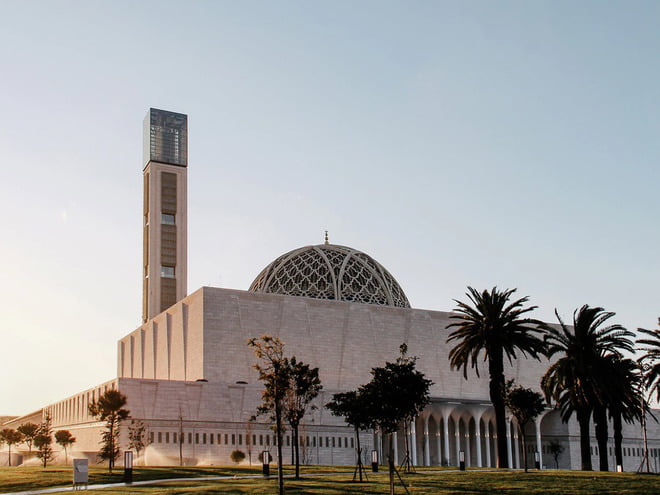
The Great Mosque of Algiers, or Djamaa el Djazar, may be found in Algiers. The mosque’s parking lot can hold as many as 7,000 cars, while the building itself spans 416,000 square meters, making it large enough to house 120,000 worshippers. The prayer hall’s 618 octagonal columns and 6 km of calligraphic text carved with lasers are the mosque’s most eye-catching features, as are the dome’s 70-meter height and 50-meter circumference.
As of its 2019 completion, it has the tallest minaret in the globe (73 meters), making it the largest mosque in Africa and the third-largest in the world. The enormous design and ornate features of the mosque are a synthesis of Algerian and Islamic styles. The Great Mosque represents the religious and cultural diversity of Algeria.
05. Amazing Scenery Along the Coast
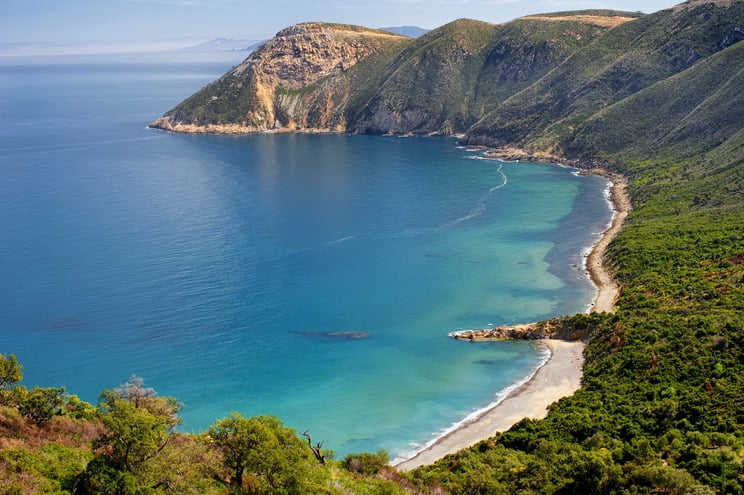
Algeria has a beautiful coastline along the Mediterranean that runs for over 1,600 kilometers (1,000 miles). The coastline of Algeria is full of stunning sights and activities, from quiet sandy beaches and secluded coves to craggy cliffs and charming coastal villages. Don’t pass up the opportunity to see Oran, Algeria, a delightful town with wonderful beaches, or the well-known coastal resort of Sidi Fredj in Algiers.
Some of Algiers’ best beaches, including Zeralda, Turquoise Coast, Sidi Fredj, Douaouda, and Palm Beach, are located in the city itself. All of them are conveniently accessible to Algiers, and their outstanding, fascinating, and pleasant surroundings make them ideal destinations for a wide range of vacation pursuits.
06. Algerian’s Culinary Delights
Many different cultures have left their mark on Algeria’s cuisine, each adding its own special flavor. Algeria’s cuisine has been influenced by a wide variety of cultures throughout the course of its history, including the Berbers, Arabs, Turks, Romans, French, and Spanish. Algerian food owes much to the many cultures that have passed through the country; it is a delicious mashup of different tastes, smells, and textures that may be prepared in a wide variety of ways.
Enjoying some of Algeria’s delicious food is a must on every trip there. The cuisine of Algeria is an enticing mix of different styles and flavors. The gastronomic pleasures of Algeria will tempt even the most discriminating food enthusiasts with their savory couscous meals, substantial tagines, delicious pastries, and scented mint tea. Make sure you try some authentic Algerian cuisine, such as brik, mechoui, and makroudh.
07. Cultural Festivals and Celebrations
Cultural festivals and celebrations in Algeria offer a captivating glimpse into the nation’s vibrant traditions and diverse cultural heritage. From religious observances to music festivals and cultural events, these celebrations provide a platform for Algerians to showcase their rich cultural identity, foster community bonds, and promote cultural exchange.
Whether it’s the Amazigh New Year celebration of Yennayer, the energetic Timgad Music Festival, or the spirited National Day festivities, these cultural events serve as a testament to Algeria’s deep-rooted traditions and the pride Algerians take in their heritage. Through these vibrant celebrations, visitors can experience the warmth and hospitality of the Algerian people while immersing themselves in the captivating tapestry of Algerian culture.
08. The Fennec Fox
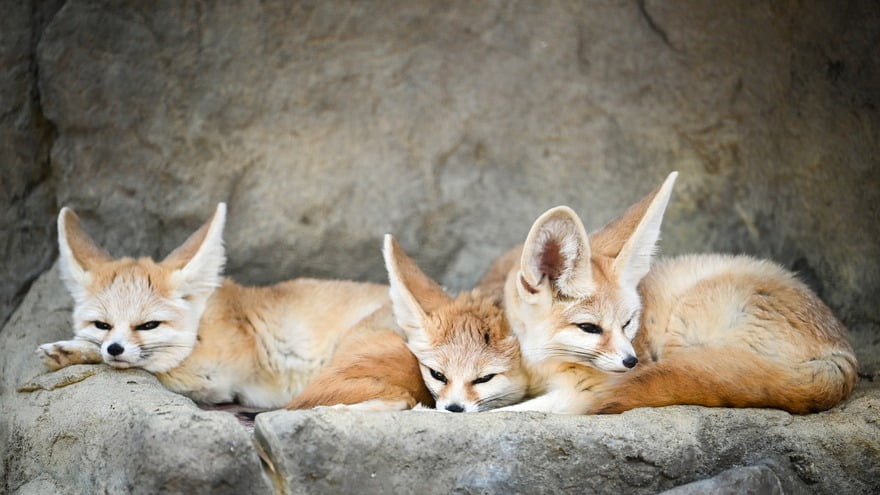
It is widely recognized that the Fennec fox, also known as the “desert fox,” is the official national animal of Algeria. It is true that the fennec fox is the smallest fox species. The average length is 14-16 inches (including the 7-12 inch tail), and the average weight is 2-3 pounds. This cute little animal is well-known for its remarkable ability to adapt to the harsh conditions of the deserts of North Africa.
The Fennec fox is distinguished by its enormous, expressive ears, which serve both as a heat sink and a hunting tool. Its supple, sandy fur and stunning eyes make it an ideal desert companion. The fox inspired the naming of Algeria’s national football (soccer) team, Les Fennecs. The Fennec fox is not only a symbol of Algeria’s rich natural history but also of the country’s capacity to adapt to new environments.
09. Algerian Hospitality and Tea Culture
The warmth, generosity, and genuine kindness of Algerian hospitality are well-known across the world. Algerians have strong cultural traditions of hospitality, and foreigners are frequently greeted with the same warmth and respect as natives. Algerians take tremendous pleasure in welcoming visitors and taking care of their needs. Algerians go out of their way to make guests feel at home, whether it’s via a simple cup of mint tea at the airport or a full-on banquet at someone’s house.
Algerians are known for their warm hospitality, and serving tea is an important aspect of that tradition. Tea made from mint, or “nana,” is a popular drink that is available at any time of day. It’s a sweet and pleasant infusion made by steeping fresh mint leaves in hot water with plenty of sugar. In Algeria, people gather over tea to connect with one another, have meaningful talks, and enjoy time together. Algerian hospitality is reflected in its tea culture, which emphasizes getting to know one another and strengthening bonds via shared experiences.
10. Diverse Wildlife and Nature Reserves
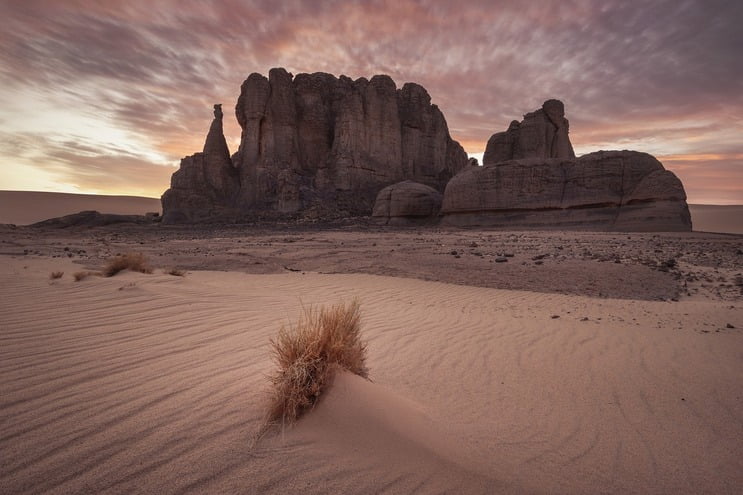
Algeria is home to a wide variety of species, and the country also has several protected areas for preserving its natural wonders. The country’s diverse ecosystems, which vary from the Sahara Desert to mountain ranges and the coast, support a wide variety of plant and animal life. Iconic animals like the Barbary macaque, North African ostrich, Atlas deer, and the critically endangered Barbary lion may all be found in Algeria.
The Tassili n’Ajjer National Park, the Taza National Park, and the El Kala National Park are just a few of the nature reserves that provide safe refuge and conservation efforts for these animals. Algeria’s natural landscape ranges from immense sand dunes to lush forests and clean coasts, and visitors to these reserves may experience all of it firsthand and learn more about the need of protecting these areas.
And Here are some other facts about Algeria
- The History of Our National Anthem: The Algerian struggle for freedom from French colonial rule is depicted in the hymn “Qassaman,” which is also the country’s official national anthem. Mufdi Zakariah, a poet and member of the Algerian People’s Party, wrote the hymn while serving time at Barberousse Prison, where he also endured torture. Zakariah wrote the lines on the jail walls using his own blood as ink, making them an iconic representation of Algeria’s fight for independence.
- The Role of Women in Algerian Society: Women in Algeria have more social and economic freedom than in the majority of Islamic countries. In Algeria, women make up over 60% of the student body and 70% of the legal and judicial professions. Algeria is a rare regional example of gender equality since women contribute more to family income than men.
- Algerian languages: Algeria has two official languages, Arabic and Tamazight (commonly known as Berber), although French is also widely spoken among the country’s population. Algerians all around the nation speak “Darja,” a kind of Arabic called a dialect. Although it is not widely spoken, English is taught in certain Algerian schools.
- The Noble Prize winners from Algeria: Two Nobel laureates have called Algeria home: Claude Cohen-Tannoudji for the Nobel Prize in Physics in 1997 and Albert Camus for the Nobel Prize in Literature in 1957. These results demonstrate Algeria’s contributions to international scholarship and technological development.
- The Flag and Anthem of Algeria: The flag of Algeria is tricolored (green, white, and red) and includes a crescent and star in the middle. Islam is represented by the green, cleanliness, and peace by the white and independence by the red. The crescent and star are universally recognized as Islamic emblems. The national anthem of Algeria is unique in that it mentions not only Algeria but also France. This one-of-a-kind feature originates in the country’s struggle for freedom from colonial rule.
In conclusion, Algeria is an enchanting destination because of its fascinating past, breathtaking natural scenery, thriving cultural traditions, and friendly people. Algeria is packed with amazing sights and activities for tourists to enjoy, from the ancient Roman remains at Djemila to the Sahara Desert and the Atlas Mountains. Wildlife, festivals, cuisine, and stunning coastline all contribute to the country’s appeal. Algeria’s unique combination of ancient history and cutting-edge culture never ceases to amaze and fascinate tourists. Algeria is a place that creates an unforgettable impression and invites you to uncover its hidden pearls, whether you’re interested in the country’s history, culture, or natural beauty.



